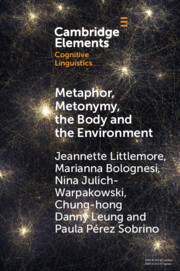Element contents
Metaphor, Metonymy, the Body and the Environment
Published online by Cambridge University Press: 05 July 2023
Summary
Information
- Type
- Element
- Information
- Online ISBN: 9781009042468Publisher: Cambridge University PressPrint publication: 20 July 2023
